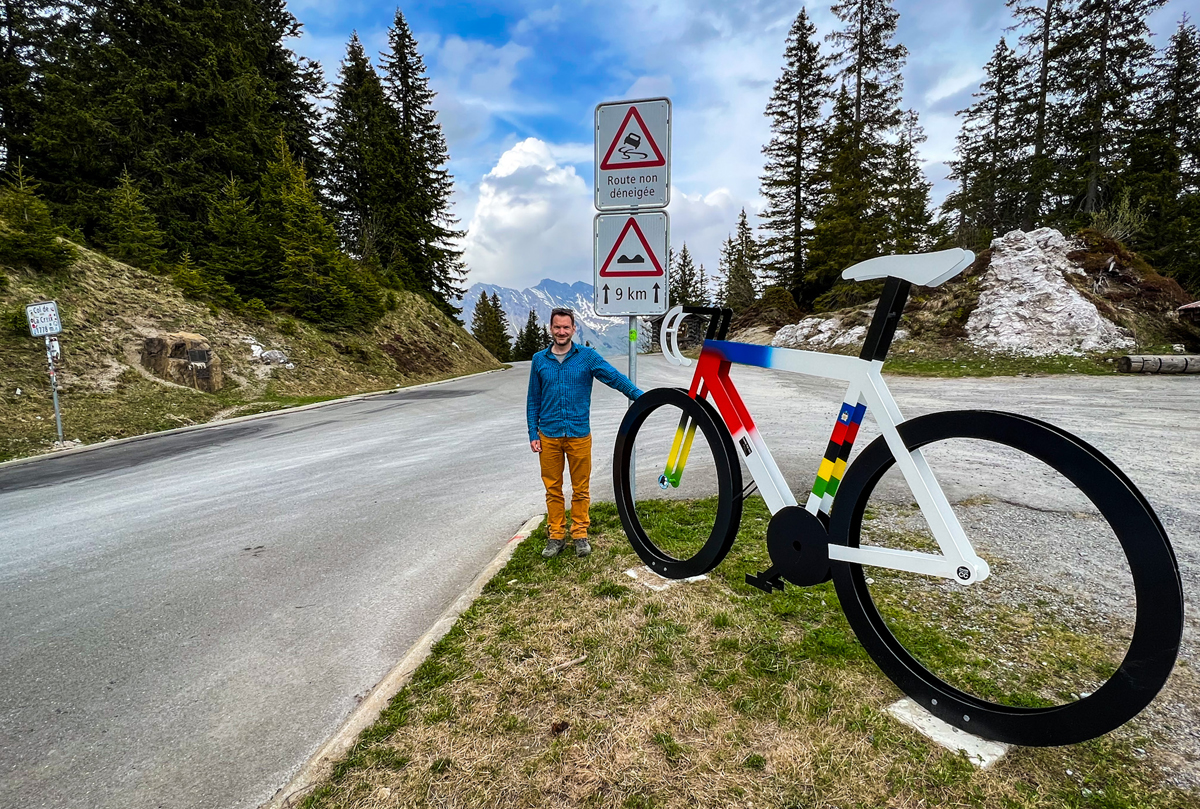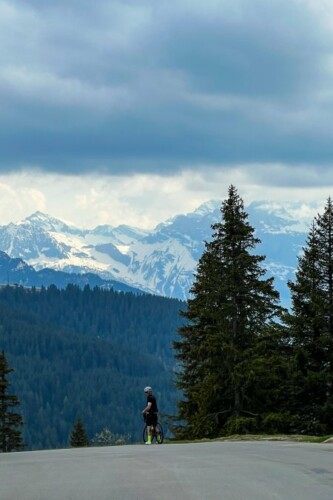SALT LAKE CITY, Utah (July 1, 2022) — The website Geo-Tour de France is now live to serve sports editors, cycling commentators and bicycle racing fans. The site geotdf.org will describe the natural decor of each stage of the Tour de France: the various landscapes and what can be found deep under the surface, for both the men’s and the women’s races. Did you know that dinosaurs have been uncovered along the route?

“It suddenly hit me: a live broadcast of a cycling race is also a perfect opportunity for a geological excursion,” explains Douwe van Hinsbergen, initiator of the Geo-Tour de France, professor at Utrecht University and die-hard cycling fan. “A lot of cyclists—and the people watching them—are interested in the landscapes they pass through as they race. And a lot of geoscientists love to cycle themselves. So maybe we can help the cycling commentators with our knowledge of the landscapes and their underlying treasures!” To make that happen, Van Hinsbergen approached colleagues from the Netherlands and abroad to write a series of blogs about the geology of the individual stages. And that was the start of the Geo-Tour de France.
Peter Lippert, associate professor of geology and geophysics at the University of Utah, is the only North American contributor to Geo-Tour de France. He joined the project while visiting sites for an upcoming field course in Switzerland but has been a cycling fan since he was a teenager. “As I became more of a geologist in my youth, I would say ‘Look at those rock folds in the background!’ when they’re in the Pyrenees or in the Alps or ‘Whoa, that’s a volcano! What’s going on here?’”

Ancient continents
This year’s Tour de France, which begins on July 1, will race through the remains of three ancient continents, along the traces of the meteorite impact that marked the end of the era of the dinosaurs, through the chalk landscape of the “White Cliffs of Calais,” over extinct volcanoes, over pieces of Saudi Arabia in Paris and many more fascinating geographical and geological phenomena along the way. For the men’s race, geotdf.org will explain a geological phenomenon along the route and the underlying process. The women’s race will ride over older and older geology every day, and the blogs will take the reader to those worlds and their inhabitants.
Lippert wrote about Stage 9, a mountain stage in Switzerland scheduled for July 10. The stage contains a nearly complete story of Alpine geology, he says, but “it’s a really confusing way of packaging that story. Things are out of order. The rocks are pretty complicated, but the key components, the continental collision part of the system, are in this stage. And the mountains that they go over are really stunning.”
Non-mountainous stages can also feature fascinating geology. Later stages through France’s Massif Central, for example, display terrain shaped by relatively recent volcanoes.
“The landscape is this amazing storybook and history book, and you just have to learn the language,” Lippert says. “This team has helped decode that and share it with the public in a really accessible way.”
The website examines the ancient worlds that lie under the landscapes along the route. These are the sum of a history stretching back millions or billions of years: the fields of geology, geochemistry and geophysics. But the website also addresses modern landscapes along the route: how they were created, the rivers and glaciers that flow through them, the characteristics of the soil and the natural disasters like landslides that strike at any time. This is the specialist field of physical geography, typically on timescales shorter than hundreds of thousands of years.
Stage 11 from Albertville – Col du Granon is introduced as follows:
Journey with the riders as they traverse what used to be the edge of Europe, pass over a collisional zone where fragments of oceanic crust are caught up in the wreckage, and then enter a terrane of rocks that were dragged deep into Earth’s interior, 45 million years ago. However, over the years, they’ve made their way back up to the surface. Rocks like these ones comprise large parts of the incredible topography of the Alps. To see these deeply buried rocks, the peloton will battle a series of rolling hills that caps out at ~2600 m at Souvenir Henri Desgrange. Marking roughly two-thirds through today’s trek, this peak is situated at the boundary between French provinces Savoie and Hautes-Alpes and is aptly deemed the heart of the French Alps. Today’s climb is a small price to pay to reach the rare rocks that formed 70 km beneath the Earth’s surface!
Send pictures
“The audience can also share photos and ask questions via the Twitter hashtag #GeoTdF”, adds Van Hinsbergen. “And during the Tour, we’ll provide daily commentary via our Twitter account @geotdf.” The commentary won’t be limited to the Tour de France itself; the Twitter account will explain the geology of cycling races all over the world, all season long.
Seven countries, seven languages
Researchers from seven countries participate in the Geo-Tour de France. In addition to those from Utrecht University, the site will feature contributions from the universities of Birmingham (United Kingdom), Montpellier and Rennes (France), Münster (Germany), Granada (Spain), Utah (United States), the VU Amsterdam, Naturalis Biodiversity Center (Leiden) and the Geological Surveys of France and of Denmark and Greenland.
Geotdf.org is available in Dutch, English, French, German, Spanish, Italian and Danish. The Twitter account is @geotdf.

